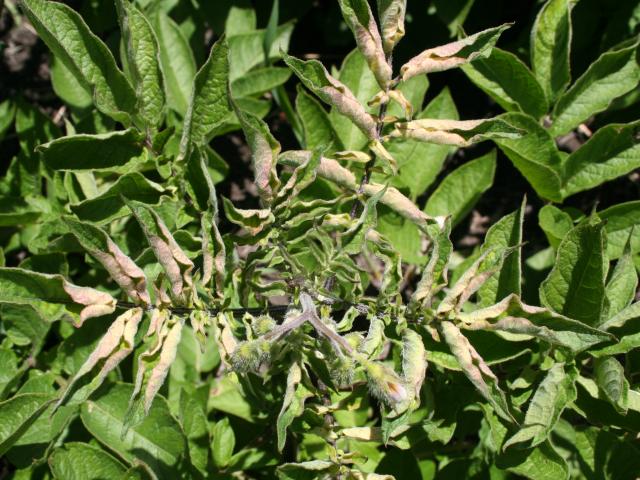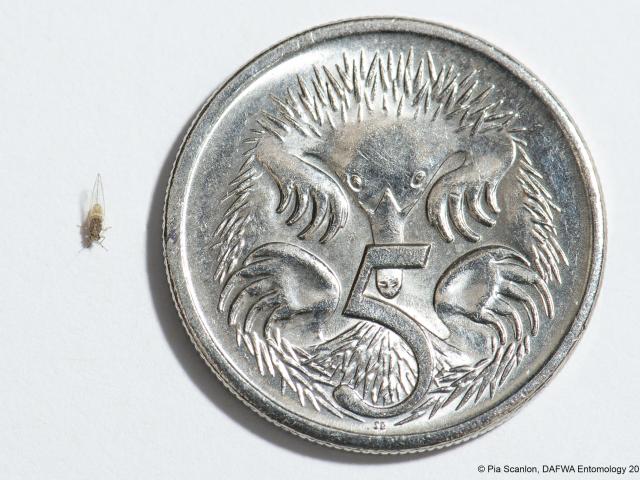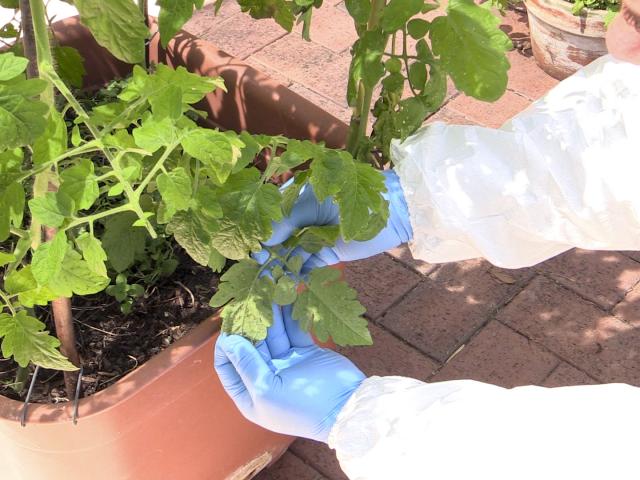TPP stages of development
TPP has three stages of development – egg, nymph and adult. All stages are very small (less than 3mm) but can be seen with the naked eye. Adults and nymphs cause injury to plants when feeding.
Adults
- Adults resemble small winged cicadas in appearance, but are the size of an aphid (about 3mm long).
- The body is brownish and has white or yellowish markings, and a broad white band on the abdomen.
- Wings are transparent and rest roof-like over the body.
Nymphs
- Nymphs are up to 2mm long, oval shaped and have a flattened scale-like appearance.
- Young nymphs are yellow with a pair of red eyes.
- Older nymphs are greenish, fringed with hairs and have visible wing buds.
Eggs
- Eggs are less than 1mm long and attached to the plant by a short vertical stalk.
- They are usually laid on the lower surface of leaves or as a halo around the leaf edge.
- Eggs are white when first laid then turn yellow to orange after a few hours.
TPP can carry the CLso bacterium, associated with 'zebra chip' disease in potatoes.
Signs and symptoms of TPP
Commercial and residential growers of host crops should regularly check for signs of TPP.
- Insect life stages on the underside of leaves and signs of leaf damage in host plants
- Adult psyllids jumping from foliage when disturbed
- Stunting and yellowing of growth tips in host plants
- Yellowing or purpling of leaf margins
- 'Cupping' or upward curling of leaves
- Severe wilting of plants caused by high numbers of psyllids feeding
- ‘Psyllid sugars’ - white sugar-like granules excreted by adults and nymphs, which coats leaves and stems, and leads to growth of sooty mould
- Stem death symptoms similar to other potato and tomato disorders


Check and report
Commercial vegetable growers and home gardeners should check for signs of TPP and report anything unusual to the Department of Primary Industries and Regional Development.



